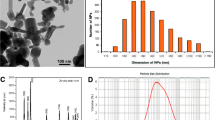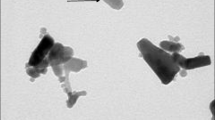Abstract
Roundup (Rn), a glyphosate-based formulation, is one of the most commonly used herbicides in the world. It affects non-targeted organisms in several ways, including adhesive activity towards metal ions. Zinc (Zn) plays a crucial role in a number of biochemical processes. In this study, we aim to elucidate the direct impact of Rn on Zn accumulation and Zn-dependent activities in the ex vivo system. To this end, we exposed the samples of the digestive gland of a bivalve mollusk Unio tumidus to 3 µM of Rn (calculated as 3 µM of glyphosate), Zn, Zn chelator (N,N,N′,N′-Tetrakis(2-pyridylmethyl)ethylenediamine) (TPEN, Tp), and their combinations ZnTp and ZnRn for 17 h. We determined the levels of Zn in the tissue (Zn t) and metallothioneins (Zn-MT), metallothioneins (MTSH), and glutathione (GSH & GSSG), total antioxidant capacity (TAC), lysosomal membrane integrity, and caspase-3 activity. Our study demonstrated that Rn and Tp had different effects on the accumulation and functionality of Zn. Rn did not affect the accumulation of Zn (Zn t, Zn-MT) in the Zn- and ZnRn-groups. On the contrary, Tp produced effects antagonistic to Zn on caspase-3 activity, lysosomal stability, and MTSH concentration. Rn caused particular pro-oxidative effect that decreased GSH level (Rn- and ZnRn-groups) and lysosomal stability (Rn-group). The shared affected index was the GSH/GSSG ratio, which decreased by 2–8 times in each exposure. As the first experience with the application of Tp to indicate Zn activity in mollusks, the study concluded that the ex vivo approach could be useful in the study of numeral aquatic pollutants.




Similar content being viewed by others
Data availability
The datasets generated and/or analyzed during the current study are available in the Mendeley Data repository by the following link https://doi.org/10.17632/jxggzrdwpd.1.
References
Andrews GK (2000) Regulation of metallothionein gene expression by oxidative stress and metal ions. Biochem Pharmacol 59(1):95–104. https://doi.org/10.1016/s0006-2952(99)00301-9
Du Y, Bales KR, Dodel RC, Hamilton-Byrd E, Horn JW, Czilli DL, Simmons LK, Ni B, Paul SM (1997) Activation of a caspase 3-related cysteine protease is required for glutamate-mediated apoptosis of cultured cerebellar granule neurons. Proc Natl Acad Sci USA 94:11657–11662. https://doi.org/10.1073/pnas.94.21.11657
Haj Y EI, Bohn S, Souza MM (2019) Tolerance of native and invasive bivalves under herbicide and metal contamination: an ex vivo approach. Environ Sci Pollut Res 26:31198–31206. https://doi.org/10.1007/s11356-019-06256-x
Eron SJ, MacPherson DJ, Dagbay KB, Hardy JA (2018) Multiple mechanisms of zinc-mediated inhibition for the apoptotic caspases-3, -6, -7, and -8. ACS Chem Biol 13:1279–1290. https://doi.org/10.1021/acschembio.8b00064
Giuliani ME, Sparaventi E, Lanzoni I, Pittura L, Regoli F, Gorbi S (2019) Precision-cut tissue slices (PCTS) from the digestive gland of the Mediterranean mussel Mytilus galloprovincialis: an ex vivo approach for molecular and cellular responses in marine invertebrates. Toxicol In Vitro 61:104603. https://doi.org/10.1016/j.tiv.2019.104603
Griffith OW (1980) Determination of glutathione and glutathione disulfide using glutathione reductase and 2-vinylpyridine. Anal Biochem 106:207–212. https://doi.org/10.1016/0003-2697(80)90139-6
Khan B, Ho KT, Burgess RM (2020) Application of biomarker tools using bivalve models toward the development of adverse outcome pathways for contaminants of emerging concern. Environ Toxicol Chem 39:1472–1484. https://doi.org/10.1002/etc.4757
Khoma V, Gnatyshyna L, Martinyuk V, Mackiv T, Mishchenko L, Manusadžianas L, Stoliar O (2021) Common and particular biochemical responses of Unio tumidus to herbicide, pharmaceuticals and their combined exposure with heating. Ecotoxicol Environ Saf 208:111695. https://doi.org/10.1016/j.ecoenv.2020.111695
Khoma VV, Gnatyshyna LL, Martinyuk VV, Mackiv TR, Mishchuk NY, Stoliar O (2020) Metallothioneins contribution to the response of bivalve mollusk to xenobiotics. Ukr Biochem J 92:87–96. https://doi.org/10.15407/ubj92.05.087
Kukic I, Kelleher SL, Kiselyov K (2014) Zn2+ efflux through lysosomal exocytosis prevents Zn2+-induced toxicity. J Cell Sci 127:3094–3103. https://doi.org/10.1242/jcs.145318
Liz Oliveira Cavalli VL, Cattani D, Heinz Rieg CE, Pierozan P, Zanatta L, Benedetti Parisotto E, Wilhelm Filho D, Mena Barreto Silva FR, Pessoa-Pureur R, Zamoner A (2013) Roundup disrupts male reproductive functions by triggering calcium-mediated cell death in rat testis and Sertoli cells. Free Radic Biol Med 65:335–346. https://doi.org/10.1016/j.freeradbiomed.2013.06.043
Maret W (2013) Zinc Biochemistry: from a single zinc enzyme to a key element of life. Adv Nutr 4:82–91. https://doi.org/10.3945/an.112.003038
Matias AC, Manieri TM, Cerchiaro G (2016) Zinc chelation mediates the lysosomal disruption without intracellular ROS generation. Oxid Med Cell Longev 2016:1–13. https://doi.org/10.1155/2016/6724585
Matozzo V, Fabrello J, Marin MG (2020) The effects of glyphosate and its commercial formulations to marine invertebrates: a review. J Mar Sci Eng 8:399. https://doi.org/10.3390/jmse8060399
McCord MC, Aizenman E (2014) The role of intracellular zinc release in aging, oxidative stress, and Alzheimer’s disease. Front Aging Neurosci 6:77. https://doi.org/10.3389/fnagi.2014.00077
Mertens M, Höss S, Neumann G, Afzal J, Reichenbecher W (2018) Glyphosate, a chelating agent – relevant for ecological risk assessment? Environ Sci Pollut Res 25:5298–5317. https://doi.org/10.1007/s11356-017-1080-1
Re R, Pellegrini N, Proteggente A, Pannala A, Yang M, Rice-Evans C (1999) Antioxidant activity applying an improved ABTS radical cation decolorization assay. Free Radic Biol Med 26:1231–1237. https://doi.org/10.1016/S0891-5849(98)00315-3
Rehberger K, Kropf C, Segner H (2018) In vitro or not in vitro: a short journey through a long history. Environ Sci Eur 30:23. https://doi.org/10.1186/s12302-018-0151-3
Roesijadi G, Fowler B (1991) Purification of invertebrate metallothioneins. Meth Enzymol 205B:263–273. https://doi.org/10.1016/0076-6879(91)05106-6
Shi B, Wang T, Zeng Z, Zhou L, You W, Ke C (2019) The role of copper and zinc accumulation in defense against bacterial pathogen in the fujian oyster (Crassostrea angulata). Fish Shellfish Immunol 92:72–82. https://doi.org/10.1016/j.fsi.2019.05.049
Tang J, Hu P, Li Y, Win-Shwe TT, Li C (2017) Ion imbalance is involved in the mechanisms of liver oxidative damage in rats exposed to glyphosate. Front Physiol 8:1083. https://doi.org/10.3389/fphys.2017.01083
Thambiayya K, Kaynar AM, St Croix CM, Pitt BR (2012) Functional role of intracellular labile zinc in pulmonary endothelium. Pulm Circ 2:443–451. https://doi.org/10.4103/2045-8932.105032
Truong-Tran AQ, Carter J, Ruffin RE, Zalewski PD (2001) The role of zinc in caspase activation and apoptotic cell death. Biometals 14:315–330. https://doi.org/10.1023/a:1012993017026
Tsui MTK, Wang WX, Chu LM (2005) Influence of glyphosate and its formulation (Roundup®) on the toxicity and bioavailability of metals to Ceriodaphnia dubia. Environ Pollut 138:59–68. https://doi.org/10.1016/j.envpol.2005.02.018
Vehovszky Á, Farkas A, Csikós V, Székács A, Mörtl M, Győri J (2018) Neonicotinoid insecticides are potential substrates of the multixenobiotic resistance (MXR) mechanism in the non-target invertebrate, Dreissena sp. Aquat Toxicol 205:148–155. https://doi.org/10.1016/j.aquatox.2018.10.013
Viarengo A, Ponzano E, Dondero F, Fabbri R (1997) A simple spectrophotometric method for metallothionein evaluation in marine organisms: an application to Mediterranean and Antarctic molluscs. Mar Environ Res 44:69–84. https://doi.org/10.1016/S0141-1136(96)00103-1
Wesenberg D, Krauss GJ, Schaumlöffel D (2011) Metallothiolomics: investigation of thiol peptide regulated metal homeostasis in plants and fungi by liquid chromatographymass spectrometry. Int J Mass Spectrom 307:46–54. https://doi.org/10.1016/j.ijms.2010.10.026
Yang H, Keen CL, Lanoue L (2015) Influence of intracellular zinc on cultures of rat cardiac neural crest cells. Birth Defects Res B Dev Reprod Toxicol 104:11–22. https://doi.org/10.1002/bdrb.21135
Yuchi A, Tanaka A, Hirai M, Yasuni T, Wada H, Nakagawa G (1993) Complexation equilibria and fluorescent properties of chelating reagents derived from ethylene glycol Bis(β-aminoethylether)-N,N,N′,N′-tetraacetic acid. Bull Chem Soc Jpn 66:3377–3381. https://doi.org/10.1246/bcsj.66.3377
Author information
Authors and Affiliations
Contributions
OS designed research; VK, LG, VM, TM, and KY performed research; OS, LG, VK analyzed data; VK prepared the figures, and OS wrote the draft.
Funding
This work has been granted by the Ministry of Education and Science of Ukraine to Oksana Stoliar (Ukrainian-Lithuanian R&D Project No M19/2020).
Corresponding author
Ethics declarations
Conflict of interest
The authors declare no competing interests.
Animal research
All applicable international, national, and/or institutional guidelines for the care and use of animals were followed.
Consent to participate
All authors consent to participate.
Consent to publish
All authors consent for publication.
Plant reproducibility
Not applicable.
Additional information
Publisher’s note Springer Nature remains neutral with regard to jurisdictional claims in published maps and institutional affiliations.
Supplemenrary Information
Rights and permissions
About this article
Cite this article
Khoma, V., Martinyuk, V., Matskiv, T. et al. Does roundup affect zinc functions in a bivalve mollusk in ex vivo exposure?. Ecotoxicology 31, 335–340 (2022). https://doi.org/10.1007/s10646-021-02512-4
Accepted:
Published:
Issue Date:
DOI: https://doi.org/10.1007/s10646-021-02512-4




